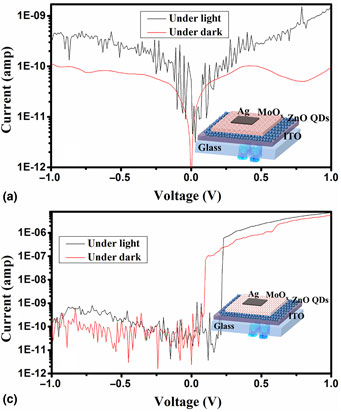Article contents
Electrical and optical characteristics of solution-processed MoOx and ZnO QDs heterojunction
Published online by Cambridge University Press: 10 August 2017
Abstract

In this work, effects of heat treatment on the heterojunction between MoOx and ZnO quantum dots (QDs) are analyzed possibly for the first time. Solution-processed and thermal deposition technique is used for the growth of MoOx over the ZnO QDs and compared for the electrical analysis. The absorption and photoluminescence properties of ZnO QDs and MoOx have been analyzed for the optical behavior. Further, the heat-treated heterojunctions are analyzed for built-in potential (0.25 V), carrier density (~2.9 × 1018 cm−3), and responsivity (3.93 mAW−1). The heterojunction of solution-processed MoOx and ZnO QDs shows better stability after heat treatment compared with other devices.
Information
- Type
- Research Letters
- Information
- Copyright
- Copyright © Materials Research Society 2017
References
- 3
- Cited by

